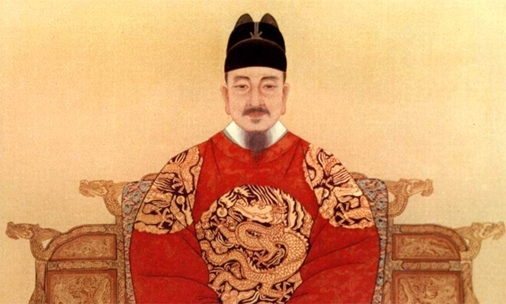The Korean language is the official language of South Korea and North Korea. There are more than 70 million speakers of the language worldwide. The Korean language is known as hangul, it consists of 14 consonants and 10 vowels, and the writing consists of syllabary words. In this article we will make a brief introduction to the Language and see a little of its origin.
Do you want to learn Korean? Click here and discover a perfect online Korean course for you!
Source
Hangul is an alphabet invented in the King Sejong dynasty around the 15th century, which ordered the alphabet from university students, because until then in Korea only hanja (Chinese characters) was used. The King began to reflect on the frustrations of his subjects who could not read or write. Most had no way to take their complaints to the authorities, except orally.
This problem disturbed the king, who became known for always paying attention to the people. Thus, King Sejong organized the creation of an alphabet that would serve those who spoke Korean and that would be easy to learn and use. In 1446, an announcement was made that the project had been completed.
In the preface to his edict, King Sejong declared: “Because they are of foreign origin, Chinese characters do not faithfully reproduce meanings other than Korean. Thus, many ordinary people cannot express their thoughts and feelings. Solidary in his difficulties, I created a set of 28 letters. The lyrics are very easy to learn, and I sincerely hope that they improve the quality of life for all people. ”

King Sejong
Characteristics
The Korean alphabet consists of Syllabary. A syllable may have a batch or not and a syllable may contain a maximum of four letters, it is composed of 24 pure letters, 10 vowels and 14 consonants that undergo some changes and increase the number of alphabet characters to 40 in their wholeness.
Instead of being written sequentially like the letters of the Latin alphabet, the letters of Hangeul are organized in syllabary blocks called Jamo. Each of the Jamos represents a syllable and the set of syllables forms a word.
Easy learning
One scholar who helped create the Korean alphabet said the following about hangul: "The wise man can learn it in one morning, and even the fool can learn it in 10 days." In any case, the ease of learning hangul has allowed illiteracy to be virtually eradicated from Korea. In fact, when he goes to school, most children have mastered it.
Furthermore, in Korean schools there is no spelling bee. Why? Because the hangul represents the sounds spoken in Korean so perfectly that accurately writing what you hear presents no difficulty.
The table below is not with detailed Korean, but you can already know the main vowels and consonants:
Tabela Responsiva: Role a tabela para o lado com o dedo <<
| CONSONANTS: |
| ㄱ (g, k) |
| ㄴ (n) |
| ㄷ (d, t) |
| ㄹ (r, l) |
| ㅁ (m) |
| ㅂ (b, p) |
| ㅅ (s) |
| ㅇng Consonant deaf |
| ㅈ (ch, j) |
| ㅊ (ch ') |
| ㅋ (k ') |
| ㅌ (t ') |
| ㅍ (p ') |
| ㅎ (h) |
| VOWELS: |
| ㅏ (a) |
| ㅑ (ya) |
| ㅓ (ó) |
| ㅕ (yo) |
| ㅗ (ô) |
| ㅛ (yo) |
| ㅜ (u) |
| ㅠ (iu) |
| ㅡ (me) |
| ㅣ (i) |
Would you like to know more about this alphabet and its multiplicity? Click on this site called Korean step by step
Let's learn some expressions and introduce ourselves in Korean.
To introduce yourself:
Korean greetings:
Thank and give back:
Excusing himself:
So…